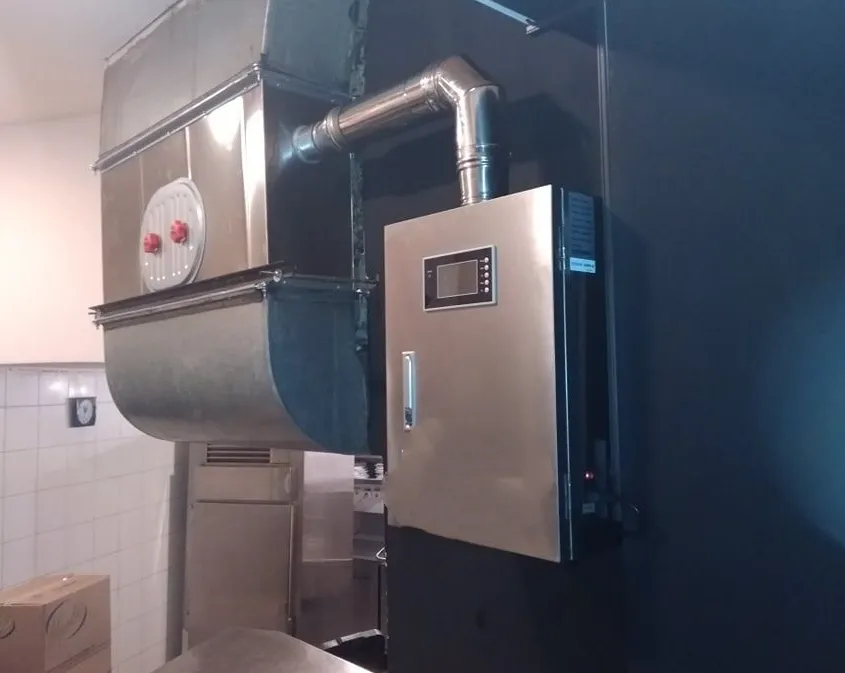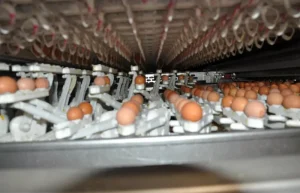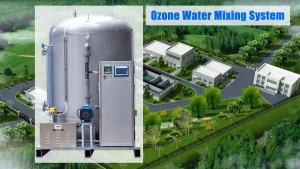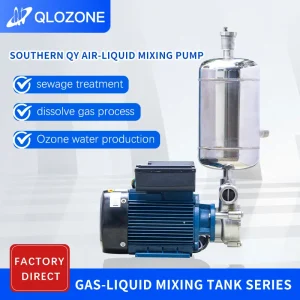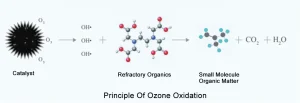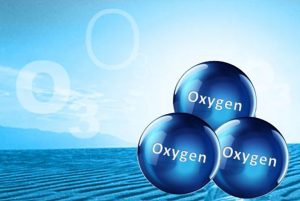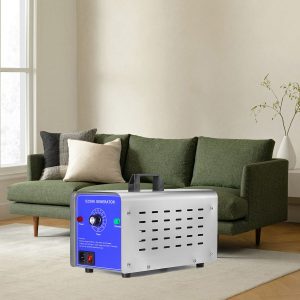Ozone has a long history of use as a disinfectant in food and beverage processing.
Agriculture`s Food Safety Inspection Service approved ozone for use on meat and poultry products. Since then many commercial systems have been installed. These systems use ozone as an antimicrobial agent for direct contact with many types of foods. Ozone is also listed in the National Organic Program final rule, which permits its use in processed products labeled as organic or made with organic.
Ozone Chemistry
Ozone is particularly effective as an actimicrobial due to its strong oxidation-reduction potential (2.07V), which is higher than chlorine (1.36V). Ozone is also environmentally friendly and leaves no harmful chemical residues. Ozone is soluble in water, and its solubility is affected by temperature, with solubility decreasing with increasing temperature. Although ozone rapidly degrades, it has a longer half-life in the gaseous state than in aqueous solution. Water purity also affects half-life in that ozone degrades more rapidly in impure solutions than in pure water. These properties of ozone are important in designing food processing equipment to generate and treat foods efficiently with ozone.
Applications of Ozone Processing to Foods
• Direct Food Contact.
Ozone can be applied directly on many food types to improve safety and extend shelf life. Foods are treated with ozone in gaseous form, as well as in aqueous sprays and dips. Sanitation of fresh produce is one of the most promising applications of ozone. Ozone is relatively gentle on produce. High levels of ozone can be used before altering the taste or appearance of produce. Another advantage of ozone is that it lowers counts of spoilage microorganisms in wash water in addition to on the produce surface, thus extending the shelf life of the produce while keeping the wash water clean and enabling less water usage. Ozone is also used in seafood processing where it has been used for many years and found to not only improve the safety of the seafood, but also to increase its shelf life. Higher-fat foods like meat and chicken require higher ozone concentrations than low-fat foods such as fruits and vegetables. When treating meat and chicken, excess levels of ozone and resulting oxidation must be avoided so as not to degrade the flavor of the meat and chicken products.
• Surface Sanitation.
Another common application of ozone is for food contact surface sanitation. The inclusion of ozone-containing water within clean-in-place (CIP) cycles offers opportunities to food processors to treat manufacturing plant surfaces more efficiently and with greater efficacy. Aqueous ozone can also be used as a sanitizing rinse for food contact surfaces, such as cutting tables, as well as for nonfood contact surfaces, such as floors. Ozone can also be used to treat aseptic food packaging materials for surface disinfection.
• Cold Storage.
Ozone can further be used to treat stored grains and other foods to control fungi and mycotoxins, as well as for insect control as an alternative to chemical treatment.
Opportunities for the Future
Interest in ozone is expected to continue to rise in response to consumer demands for environmentally friendly food processing technologies. A recent publication mapped trends in implementation or potential for implementation of ozone in the food industry. It found that ozone scored very high in terms of potential applications for fresh produce, seafood, and beverages. Another potential future application for ozone is its use to degrade pesticide residues, including organophosphates and organochlorinated compounds. As with many process technologies, ozone also has good potential for use as a hurdle technology to be combined with other sanitation and disinfection technologies to improve the safety of foods and beverages while extending their shelf life.




